Advance Preparation
This does not simply mean having clean birds. Show preparation starts months before a show because fitness (correct feeding for good bone and muscle) is the framework upon which all the superficial items such as feathers are built. With some early maturing breeds it is only possible to show them at their peak in their first year, which usually means when they are just at point of lay. Hatching, therefore, has to be timed to match point of lay (usually 5-6 months) and the chosen show(s). This effectively means that if these breeds do not have the required breed points when they are young, they are unlikely ever to have them. Other breeds (particularly Large Fowl) do not fully mature until they are aged about 18-24 months, so will gain in breadth of body if the frame is there as youngsters. Again, positive signs of health should be present in every potential show bird including a bright eye, red comb, dry nostrils, shiny feathers, a good weight, clean feathers under the tail, and an alert and active manner.
Check on the correct leg colour for your breed as stated in the Standard. If it should be yellow or orange, and the birds have been laying well, the yellow colour will go out of the legs into the yolks. Feeding cut maize will help counteract this, as will running the birds on grass. By the same token, if your bird should have white legs (or plumage) do not feed maize in order to avoid a yellow tinge and avoid too much sunshine as the white feathers will gain an undesirable straw tinge.
A proprietary louse powder or spray should be used periodically to ensure no parasites accompany your birds to the show. It is a good idea to apply the same treatment on return from the show. Precautions should have been taken against scaly-leg mite so that should not be present on your show birds. Make sure that the birds? claws and beak are trimmed - be careful not to overtrim them. Dog or plier toenail clippers are the correct shape for this.
All shows have an entry closing date which varies between several weeks to one week before the show. Make sure that you enter before this date, as late entries are not accepted. Check your entries are correct for the various classes and make sure you keep a record of what you have entered. Show Secretaries will provide entry information and a classification schedule if asked. Their addresses are in the Poultry Club Yearbook under Affiliated Societies, and lists of forthcoming shows are published in the various poultry magazines. If you have shown the previous year, you will usually be sent a schedule.
Before the Show
Every bird will need its feet and legs thoroughly scrubbed clean in warm water before showing. A cocktail stick or nail file can be used to very carefully and gently remove any remaining dirt from under the scales. Coconut oil, available from health food shops can be applied to the legs and will stop the dirt getting back under the scales - it also helps to keep the legs free from scaly-leg mite. When it comes to full washing, even dark coloured birds may need some washing for show. Either washing-up liquid or baby shampoo is usually used. The birds are dunked (up to the head) in warm water, lathered (brushing feathers away from the head), rinsed thoroughly, and initially towel-dried and finished either in front of a fire or with a hair dryer. The birds will usually enjoy the experience if it is done carefully and thoughtfully.
It is best to wash birds at least a week before a show to allow the natural body oils to return to the feathers. Put the birds in a clean show pen in an area with lots of human activity to get them used to the bustle of a show. The transition from free-range or outdoor pen is so much easier if the bird is tame and used to being handled. The legs and feet may need cleaning again in the run-up to the show. Those feather colours which are liable to fade or change with prolonged exposure to sun and rain (e.g. buff, white, etc) tend to be kept in outdoor runs which are covered over which will ensure they are still fit and the correct colour. If you can only wash a bird the day before a show, make sure it is completely dry before you box it otherwise the feathers will stick out at all angles. Always try to use boxes for transporting the bird to the show that are slightly big so that the birds have enough room both to keep cool and to turn around which ensures the bird is comfortable and will not damage its plumage. The most popular method is to use cardboard boxes as they are disposable after use, readily available, and come in a host of sizes. Other fanciers have custom-made wooden boxes which must be cleaned after each use. Whatever is used, remember to ensure the box has sufficient ventilation holes.
At the Show
Make sure that your birds are penned in time for judging (published in the Schedule), and a little oil, vaseline, or hand cream, rubbed on the comb, wattles and legs will spruce the bird up. A silk handkerchief is said to be good for imparting a shine to the feathers, but it is obviously far more enduring to have the shine there through good feeding and management in previous months.
Birds are not normally fed or watered in show pens before judging as this can change the correct outline or create dirt and droppings, but take food in the form of grain (firmer droppings) to a show plus water in a container suitable to pour into containers for the bird. Not all shows are of sufficient duration to enable stewards to feed and water birds. Water containers are sometimes provided but it is advisable to take a two-hook cup drinker or a small plastic container which can be wired, pegged, or fixed to the pen so that it does not tip over.
After judging has been completed you should feed your birds and check their water. Your birds will be required to remain at the show until the stated lifting time. This period is usually a good time to talk to the judge or other fanciers and learn more about the birds on display and why the birds have been placed in a particular order.
After the Show
Bear in mind when returning from a show that dusting with flea powder is a sensible precaution, and ideally, all show birds should be kept separate from your other stock for a week just to make sure that they have not brought something contagious home from the show, or that the stress of showing has not depressed their immune systems, allowing the entry of disease. A bit of cosseting after a show may well mean that a particular bird can be shown again soon, or return to the breeding pen in a fit condition.



